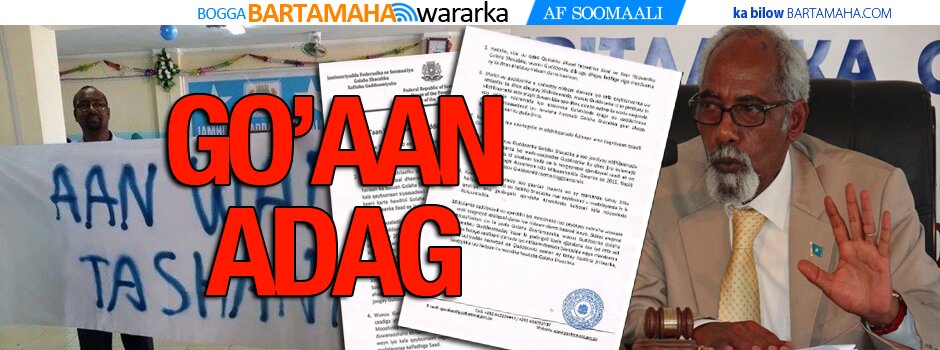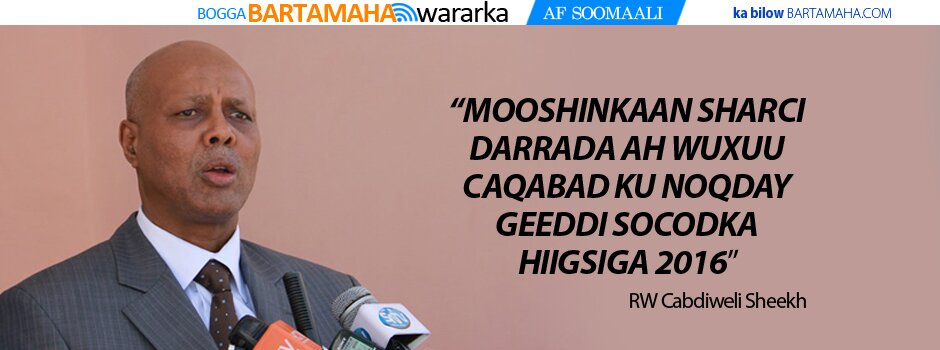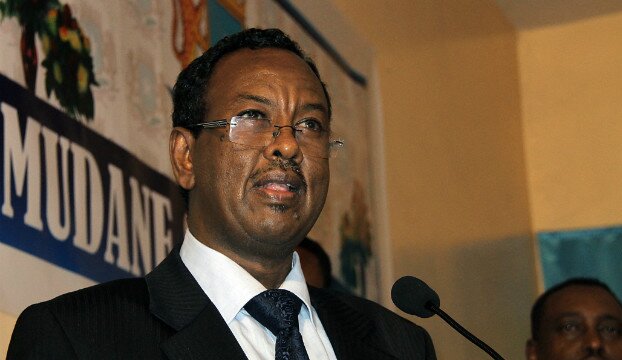Famine Ravages Somalia in a World Less Likely to Intervene
 DOLO, Somalia — Is the world about to watch 750,000 Somalis starve to death? The United Nations’ warnings could not be clearer. A drought-induced famine is steadily creeping across Somalia and tens of thousands of people have already died. The Islamist militant group the Shabab is blocking most aid agencies from accessing the areas it controls, and in the next few months three-quarters of a million people could run out of food, United Nations officials say.
DOLO, Somalia — Is the world about to watch 750,000 Somalis starve to death? The United Nations’ warnings could not be clearer. A drought-induced famine is steadily creeping across Somalia and tens of thousands of people have already died. The Islamist militant group the Shabab is blocking most aid agencies from accessing the areas it controls, and in the next few months three-quarters of a million people could run out of food, United Nations officials say.
Soon, the rains will start pounding down, but before any crops will grow, disease will bloom. Malaria, cholera, typhoid and measles will sweep through immune-suppressed populations, aid agencies say, killing countless malnourished people.
In a way, this is all déjà vu. In the early 1990s, Somalia was hit by famine, precipitated by drought and similarly callous thugs blocking food aid and producing similarly appalling images of skeletal children dying in the sand. In fact, the famine back then was in the same area of Somalia, the lower third, home to powerless minority clans that often bear the brunt of this country’s chronic troubles.
But in the 1990s, the world was more willing to intervene. The United Nations rallied behind more than 25,000 American troops, who embarked on a multibillion-dollar mission to beat back the gunmen long enough to get food into the mouths of starving people.
Contrast that with what happened last week. At a lackluster famine summit meeting in Nairobi, Kenya, Ethiopia’s prime minister, Meles Zenawi, proposed to forcefully establish humanitarian corridors, so that food aid could be delivered to Shabab-controlled areas. Few Western donors were enthused.
“There’s no mood for intervention,” said one American official, who was not authorized to speak publicly on the matter. “People remember what happened in the 1990s. ‘It doesn’t work’ was the conclusion.”
Foreign military force, analysts say, has never succeeded in solving Somalia’s problems and it is not going to solve them now. This famine is not just about the Shabab’s blocking food aid. It is about a broken state and the human wreckage it is causing.
Take Mogadishu, the capital. The Shabab more or less pulled out in August, leaving Somalia’s transitional government in control of large swathes of the city, including the sprawling camp for displaced refugees. But government “control” — and that term seems more aspirational than meaningful — does not translate into a smooth aid operation. Instead, government soldiers have looted aid trucks and shot starving people.
Somalia’s politicians have been too busy squabbling with one another to build institutions like a functioning health ministry or a sanitation department that would help drought victims. Some of the informal clusters of people in Mogadishu camped out for aid are already breaking up, and it is not clear where the displaced people are trudging to. Many aid agencies — and Western militaries — are justifiably wary of this environment, and so far the response to the famine has been well short of what is needed to stem the crisis.
“I don’t think that there’s a case to be made that the famine can be mitigated through military intervention,” said Bronwyn E. Bruton, a democracy and governance expert who wrote a provocative essay published by the Council on Foreign Relations urging the West to withdraw from Somalia.
The African Union, which has 9,000 peacekeepers in Mogadishu, “isn’t able to safeguard the delivery of aid in Mogadishu,” Ms. Bruton said. “How could they possibly extend their reach outside the capital?”
“Theft, corruption and violence are endemic,” she added. “The problem extends past Al Shabab to anybody with a gun.”
In Somalia, there are many of them. This was the problem in the 1990s. The United Nations urged American forces to disarm the warlords and their flip-flop-clad militias, but the Pentagon did not want to risk many American lives to do that. Instead, the United States opted for a narrowly scoped intervention and then hastily withdrew after 18 servicemen were killed in an epic street battle immortalized in the “Black Hawk Down” book and movie (and video game). According to a study by the Refugee Policy Group, the American-led operation and the attendant relief effort saved around 110,000 lives, while 240,000 were lost to the famine.
It is grim math, especially considering how enormous the aid operation was. The Refugee Policy Group study has a graph showing famine casualties, which tend to come in two spikes: one at the onset of the crisis, before the bulk of aid arrives; the other when the rains come. For the current famine, analysts are now bracing for possibly hundreds of thousands of deaths.
“We’ve lost this round,” said Ken Menkhaus, a political science professor at Davidson College. “The numbers are going to be horrifying. We’re too late.”
Famines do not turn on a dime. Bodies are depleted by months of malnutrition and stress. Many Somalis, as evidenced by the throngs of half-living people stumbling into the camps in Mogadishu or the ones here in Dolo, a little town on the Ethiopian border, are too far gone.
“One or two people are surviving from each family,” said Lul Mahamoud Ali, a mother of four who recently arrived from a famine-stricken village. Her children were listless and glassy-eyed, and Mrs. Lul carried with her all she owned — a thin mattress, a red mat and a wooden chest, which was empty.
Mr. Menkhaus worked as an aid consultant in Somalia in the 1990s and said: “Back then, we were just making it up as we went along. Today it’s so much more scientific.”
For instance, the American government has helped set up the Famine Early Warning Systems Network, which tracks everything from rainfall to the price of goats to forecast potential famines worldwide. This has helped aid groups pre-position food in Somalia and prepare for the deluge of refugees, though it seems that few anticipated just how bad this famine would be.
Another lesson learned was how to feed people. The approach in the 1990s was to flood Somalia with food aid, which empowered militias, set off conflict between them and created a flourishing criminal network of war profiteers who stood to make millions off looted grain. This time around, the World Food Program and others are still handing out food, but more aid agencies are turning to cash or to food vouchers, enabling hungry people to buy their own supplies, which is intended to encourage private enterprise and not make enemies of Somalia’s powerful businessmen.
The other day, Chris Smoot, an official with the World Vision aid group, arrived in Dolo with a thick book of food vouchers. He presented them to the young district commissioner, who sat in a twig hut and revealed that he had little experience in dealing with emergencies and little schooling.
“Imagine,” Mr. Smoot said. “You’re 35 years old, you have a primary school education, you’re the D.C., and now you’re confronted with this?”
Twenty years after the central government collapsed, this is the story across so much of Somalia. And given the world’s limited interest in a major intervention, that is not likely to change anytime soon.
Comments
comments
 Calendar
Calendar






































